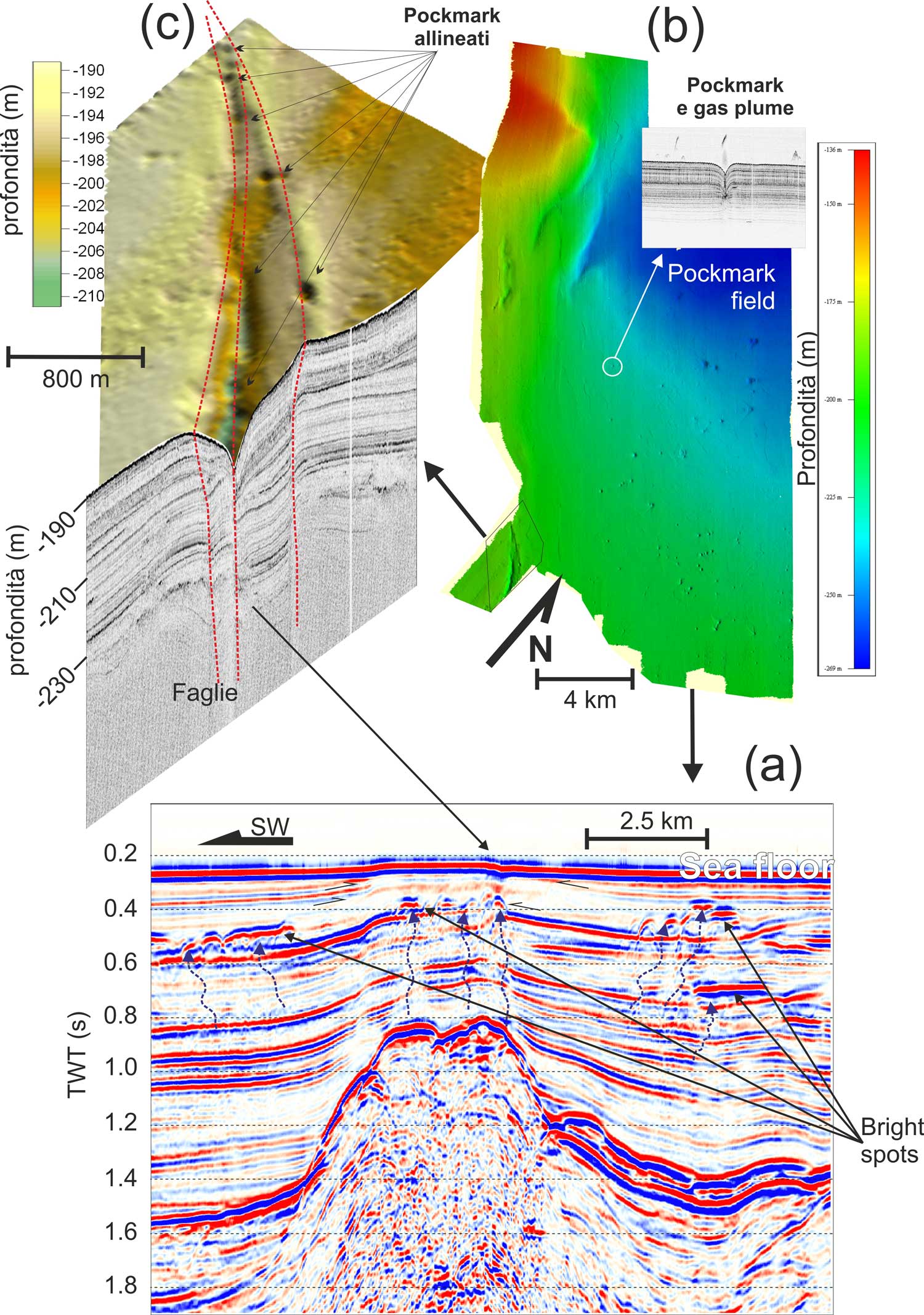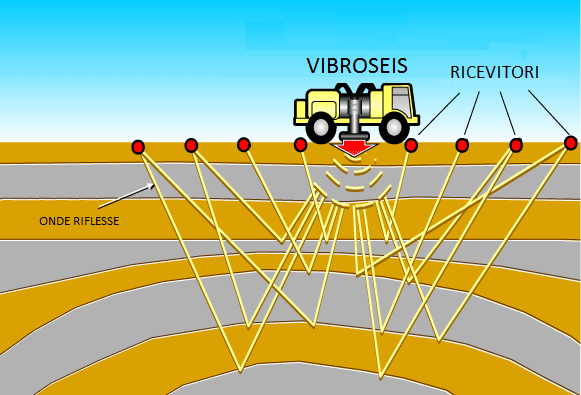The seismic reflection is a methodology widely used in the exploration of the deepest part of the subsoil, it is in fact used to explore very high depths, up to 6-8 km.
This method of investigation consists in sending in the ground, through a source, elastic waves and in recording the reflections generated by the discontinuities present in the subsoil through a setting of receivers called geophones.
The seismic waves induced in the subsoil give rise to a reflection whenever they meet an interface between two means characterized by different physical-elastic parameters and, therefore, by different values of acoustic impedance.
From the value of the times elapsed between the moment of the acoustic wave generation and the recording of the signal, after an adequate processing, it is possible to locate the position, in the subsoil, of the point where the reflection took place. By repeating this operation for a large number of points aligned with each other, it is possible to define the separation surfaces between layers characterized by different velocities of propagation of the acoustic waves.
The most used marine seismic source consists of compressed air cannons called air-guns. This system uses the impulse generated by the expansion in water of a high pressure air volume. Compressed air at about 130 atmospheres by means of powerful compressors is fed into a chamber inside special "rifles" from which, through an electromagnetically controlled system, it is released into the water in a very short time, about 2 milliseconds










